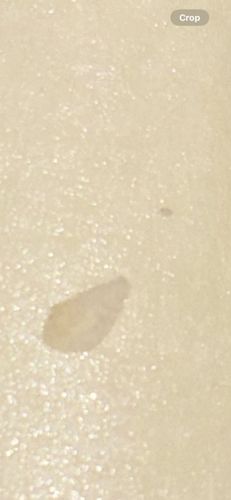Aphid nymph
Scientific Name: Aphidoidea (Superfamily, as it appears to be a nymph rather than a specific adult identifiable species)
Order & Family: Hemiptera, Aphididae
Size: Typically 1-4 mm, though nymphs are smaller than adults (often less than 1 mm up to 2 mm).

Natural Habitat
Found on a wide variety of plants, including crops, ornamental plants, and wild vegetation. They prefer tender new growth.
Diet & Feeding
Plant sap (specifically phloem), making them phytophagous.
Behavior Patterns
Aphids reproduce rapidly, often through parthenogenesis (without males) which allows populations to grow quickly. They feed by inserting their stylets (piercing mouthparts) into plant phloem to suck out sap. Many species produce 'honeydew,' a sugary excrement. They often move slowly or remain stationary while feeding.
Risks & Benefits
Risks: Aphids are significant agricultural pests that can cause direct damage by feeding, leading to stunted growth, distorted leaves, and reduced yields. They also transmit plant viruses. Benefits: They serve as a food source for many beneficial insects (e.g., ladybugs, lacewings) which helps in natural pest control. Their honeydew can also be a food source for ants and other insects.
Identified on: 8/29/2025